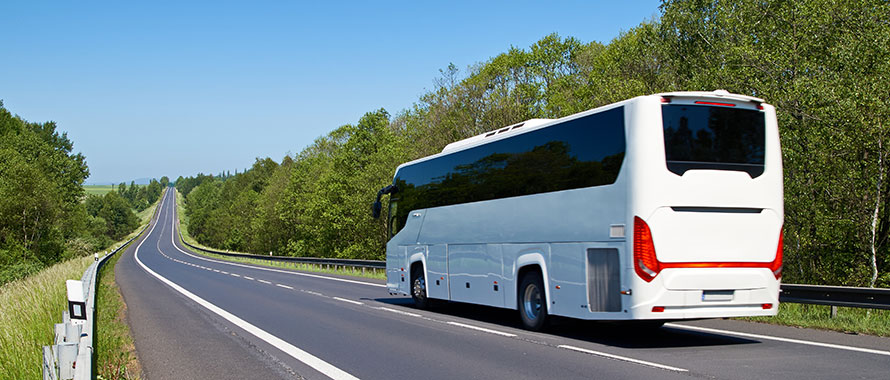Officials are continuing to investigate an Aug. 14 tour bus accident that sent dozens of passengers to the hospital. The bus was headed from Poughkeepsie to Niagara Falls and was carrying 57 adults and children when it ran off the highway and rolled over near Weedsport, New York, landing on its side. A total of 24 ambulances responded to the scene and transported the driver and all of the passengers to local hospitals. The extent of passenger injuries ranged from minor scrapes to broken bones and internal bleeding, sources said.
As of Aug. 17, two passengers remained in critical condition and no fatalities were reported. The tour bus company, JTR Transportation in Poughkeepsie, had a “satisfactory” rating with the Federal Motor Carrier Safety Administration as of April, which is the highest rating available, the Associated Press reported.

There could be at least 50 separate lawsuits associated with this incident. Based on the number of individuals injured, the payout could be catastrophic for the company.
While the cause of the accident is still unknown, any crash of this magnitude could put a transportation company out of business, said Tyler Myers, Manager, Transportation, Burns & Wilcox, Dallas/Ft. Worth, Texas.
“There could be at least 50 separate lawsuits associated with this incident. Based on the number of individuals injured, the payout could be catastrophic for the company,” Myers said. “Charter bus companies tend to have excellent driver hiring practices and so we do not see a high frequency of incidents, but when something like this does happen, it is typically going to be severe.”
Auto Liability Insurance, Excess Liability Insurance, and Auto Physical Damage Insurance will be crucial for responding to this type of incident, said Gene’ Cain, Broker, Transportation, Burns & Wilcox Brokerage, Atlanta, Georgia.
“These days, an automobile claim with any level of severity is going to be millions of dollars,” Cain said. “Unfortunately, these types of claims happen frequently.”
Transportation companies require high liability limits
In 2019, large trucks including commercial vehicles represented 4% of all registered vehicles and accounted for 10% of all vehicles involved in fatal crashes, according to the National Safety Council. On Aug. 19, a driver in a Jeep died after rear-ending a school bus outside a student transportation depot in Jacksonville, Florida, News 4 Jax reported. The Jeep ended up about 30 yards from the school bus, which had no students on board when the crash happened.
“The reality is that when you have these big vehicles going up against smaller vehicles, it can be serious,” Cain said. “Rear-end accidents occur all of the time.”

These days, an automobile claim with any level of severity is going to be millions of dollars.
Beyond collisions, other vehicle problems can also present liability concerns. In 2018, vehicle fires in the U.S. caused 560 civilian deaths, 1,500 injuries and $1.9 billion in property damage, with the top causes of vehicle fires including mechanical failures and electrical malfunctions, according to the National Fire Protection Association. On Aug. 7, a limousine company’s bus overheated and burst into flames while transporting guests to a wedding in Morris, Connecticut, Fox61 News reported. The driver reportedly pulled over when the bus’s engine started overheating, allowing time to evacuate the passengers, who were not injured and only “slightly delayed” by the incident.
Federal law requires for-hire passenger carriers that seat 16 or more passengers to carry $5 million in primary Auto Liability Insurance coverage, Cain said. A limousine, meanwhile, would usually need to carry $1.5 million in Auto Liability Insurance limits. These policies can cover medical expenses, legal defense and other costs in the event a third party is injured in an accident. Transportation companies generally need to pair their Auto Liability Insurance with layers of Excess Liability Insurance to obtain enough coverage.

Nuclear verdicts are becoming much more frequent, and the legal climate in many states makes it a lot easier to go after a company.
“Those limits are needed to cover these severe claims that have the potential to reach upwards of $5 million,” Myers said, noting that settlement amounts will ultimately depend on various factors, including whether negligence occurred. “Nuclear verdicts are becoming much more frequent, and the legal climate in many states makes it a lot easier to go after a company.”
Even $5 million in liability coverage may not be sufficient for an accident like the recent charter bus crash, Cain said. It may be necessary for transportation companies to purchase additional layers of Excess Liability Insurance or an Umbrella Insurance policy to extend over all aspects of the business.
“When you have 50 or more passengers injured, $5 million is probably not going to come close to covering what those lawsuits could be,” Cain said. “That is why this type of company will need to carry healthy Excess Liability Insurance limits.”
Driver training, monitoring key amid ongoing labor shortage
The transportation industry has long faced a labor shortage, particularly in long-haul trucking, according to a May 2021 NPR report. Also in May, CNN Business reported that demand for delivery truck drivers continued to soar even despite pay increases being offered by companies to entice drivers.
“Hiring qualified drivers is an overarching challenge for this industry,” Cain said. “The driver shortage is an ongoing, continuing challenge, and it is not getting any better.”
Despite charter bus drivers tending to be “more mature, older individuals” with extensive experience, any driver could be at risk for falling asleep during early-morning or late-night trips or suffering an unforeseen medical emergency. Programs are available to help transportation companies address these risks and regularly monitor their drivers, Cain said.
“After an accident, they will often find out after an investigation that a driver fell asleep, there was a medical emergency, or the driver was going too fast,” he said, adding that proper vehicle maintenance is also essential. “Sometimes there are maintenance issues and mechanical failures, but that is less common.”

Hiring qualified drivers is an overarching challenge for this industry. The driver shortage is an ongoing, continuing challenge and it is not getting any better.
Companies should have rigorous hiring standards for drivers, Myers emphasized. “Hiring experienced drivers is so important,” he said. “You want someone with experience driving that specific unit and experience with the commodities they are being hired to haul.”
Technology such as 360-degree vehicle cameras can help transportation companies better investigate incidents and prevent them from happening in the future, Myers added. “A lot of the charter busses are not utilizing the 360-degree cameras,” he said. “The outward-facing dash cameras do help, but they do not really show what is going on around the vehicle.”
When seeking Auto Liability Insurance and Excess Liability Insurance, transportation companies should ensure they only work with A-rated insurance carriers due to the risk of non-payout and other issues with non-rated carriers, Myers said. “We have seen examples in the recent past of groups going out of business and being unable to pay their claims,” he said. “If they go solvent, they are not held accountable to pay their claims. They are not held to the same standards as a rated carrier.”
Physical damage to fleets a growing risk due to severe weather threat
Physical damage to a transportation company’s fleet is a growing concern as severe weather events increase in frequency and intensity. Damage to a commercial vehicle caused by wind, hail or other weather events could be covered by Auto Physical Damage Insurance, Myers explained.
“It is getting very difficult for insurance markets to get comfortable in certain territories,” Myers said, pointing out the “Hail Belt” as one example. “We are seeing more catastrophic hail claims and storms are happening more frequently.”
One way to address this risk is storing part of a fleet at a different location. In some cases, this may be required by an insurance carrier to help mitigate future losses. “If you do have a flood, storm surge or hail storm, it is going to be a huge claim,” Myers said. “The insurance carrier may ask for there to be more than one garage or terminal space location to help avert that risk. That can be considered one of the costs associated with operating in a high-risk territory.”
Busses and other commercial vehicles can be especially expensive to repair, making this coverage even more important. “Charter busses, depending upon their age, are typically quite expensive,” Cain said.
Depending on the type of services a transportation company provides, other necessary insurance policies could include Hired and Non-Owned Auto Liability Insurance and Transportation Pollution Liability Insurance. Workers’ Compensation Insurance can cover potential workplace injuries, such as drivers injured in a crash, and Commercial General Liability (CGL) Insurance could help cover costs related to someone being injured while moving across an aisle on a bus.
“If somebody slips and falls in the terminal, that is where the general liability would come into play,” Cain explained. “In most cases, if the bus is not involved in an accident that caused the injury, it would be covered under the CGL Insurance.”
Motor Truck Cargo Insurance is another policy that may be needed for certain transportation companies. This type of insurance covers liability for cargo being hauled by a for-hire carrier. “A ding on a new car, for example, can be a massive claim for a car-hauling company,” Myers noted.







